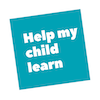Journey 1: First Steps to Help Your LD Child
![]()
First Steps You Take to Help Your Child
Your child is having troubles learning. What do you do? We can help! These are some of the the very first steps that you take to help your child with problems learning. We call these steps, Journey 1.
As part of our Pathway to Success, we are defining six different journeys that you take, to support your child’s learning. This lets us give you detailed information that’s focused on success. Click on this link to see, all of the journeys you take to help your child.
Journey 1 Focuses on How to Identify What’s Going on With Your Child
Many parents simply trust LDs to the experts. The problem is that the experts (e.g. teachers) might not have had a lot of training in your child’s particular LD. So even though it’s hard, the parent (who spends the most amount of time with the child) should take a look at what is happening with school and learning. Journey 1 include talking with the teacher, looking at schoolwork, and taking a look at who your child is and what are their areas of difficulty.
![]()
The First Thing? Set up a System to Collect Information
The first thing that you need to do is start keeping records. Claiming support for your child is a bureaucratic action. You need to have all of your facts and forms in order — just like going to the DMV.
You might need to provide materials as part of negotiating with the school, and in the legal process to claim LD support. And you might need samples of your child’s work, to show in what way they have trouble learning.
CLICK THIS LINK: We suggest that you start by buying an old-fashioned binder, and this post tells you what materials to collect and keep.
Buying a binder and a paper calendar might seem silly. Of course you can remember things! But you will be taking note of all different types of information as you follow this journey, including information that might seem ridiculous, but will help you in the future!
![]()
Look at Strengths, Weaknesses, Interests, and More
CLICK THIS LINK: We suggest that you create a learning profile to store information about your child.
If your child has problems learning, you can’t just rely on other people to tell you what’s going on. You have to investigate and educate yourself.
You’ll need an informed point of view from which you can work to get support for your child.
The information that you gain in this journey will give you good basic input and help you in every other journey. You’ll also get a better diagnosis for your child, with good basic input.
There are several steps to building a profile for your child.
First, reach out to your child’s teacher so that you can ask her how your child is doing. This link describes some basic techniques for getting to know and getting along with your child’s teacher.
Then, ask your teacher specific questions about how your child is doing. Your teacher has expertise. Has she seen this pattern of behavior before? Does your child’s work look like other children’s work? How does she suggest handling the situation?
Talking with your child’s teacher will tell you several things:
- What has she noticed? Ask about every subject. Bring homework and marked up work and ask about it. Which of the things indicate patterns of learning difficulty?
- What is her attitude about and expertise with learning problems like the one your child has? Has she seen this type of problem before? How does she typically deal with it?
- How deep is her personal toolkit for dealing with learning problems? This can be different for every teacher. Even a brand new, but motivated and imaginative teacher can have a great toolkit. Listen.
- What is her attitude? Is she telling you that your child isn’t learning because of a personality problem, like laziness? Does she seem particularly harsh? Look out for those flags and write them down, with specific examples. No, your child’s LD is not an indicator of poor character. No, your child’s LD is not their fault in some way. And there is no reason to accept that approach. If your child has a difficult relationship with the teacher, CLICK HERE to see this information on how to handle it.
![]()
Start Keeping Track of Schoolwork, Interaction, and Problems
In the link above, we mention using a paper calendar. You also need to keep emails, marked-up schoolwork, and any other information.
You can keep everything in a binder and in a shareable folder. CLICK HERE for more information on how to store information.
We also suggest that you use our Learning Profile Workbook, DOWNLOAD the Learning Profile Workbook by Clicking Here. (This notebook is not finished. Check back later.)
Identify Your Child’s Strengths, Weaknesses, and Interests
We talk about generating a learning profile for your child, and identifying strengths, weaknesses, and interests is the first step.
It’s important to understand the role of strengths in learning differences. Personal strengths can make or break a child’s success in life, so it’s important to feed them. Many parents, however, think that personal strengths mean that their child is good at the tuba or gymnastics. Nope.
CLICK HERE to read a life-defining description of strengths in children.
We also suggest that you give your child a whole child diagnosis, making sure that they don’t have an eye or a hearing problem that’s undiagnosed.
Look at Your Child’s Schoolwork
As part of the process of helping your child, you will need to gather information and come to your own conclusions about what you want to do. In order to do that, you need to look at your child’s work. Ideally, you will also be able to talk with your child’s teacher.
Take a hard look at your child’s work. What do your child’s grades look like? Are they consistently missing anything? Does the teacher repeatedly call out things your child does?
Now take another look. Is your child making these mistakes because they don’t care? Or because they have trouble learning? You’ll need to observe and keep some of the marked up work so that you can show the type of feedback that your child gets.
Go through your child’s schoolwork, and note the following:
- How long did the work take to do? How long did it take for their peers to do it?
- What were the hardest things about this piece of work? Were there things your child was unable to do?
- How does this work prove that your child’s learning disabilities prevent them from learning like their peers?
- What would you like for the teacher to do differently? CLICK HERE for a list of accommodations that other parents have requested.
Mark your observations about the work on post-it notes and put them onto each piece of work that you might use in future meetings.
Notice How the Teacher is Teaching
Has the teacher mentioned that your child might have an LD? Write down or save any input that the teacher has given you about your child’s learning challenges. Try to get the teacher to email you, as opposed to talking. You can use emails in your favor legally to get support for your child.
CLICK HERE for information about talking and succeeding with your child’s teacher.
CLICK HERE for information about how to collect information from your child’s teacher.
Learn What the School is Requiring
It’s important to take a real look at your child and their learning environment when you’re trying to identify their learning weaknesses. It’s also important to look at what schools require.
When you look at your child’s environment, remember that your child is affected by their personal strengths and interests, as much as their weaknesses. They’re also affected by all sorts of aspects of their environment. Are they in a classroom with friends? How is the teacher dealing with your child’s learning problems? A teacher can often make or break a child’s year, and it’s important to understand whether your child’s teacher is educated in LD teaching techniques, as well as your child’s diagnoses. (Hint: If your teacher says “They’re just lazy,” you might want to look elsewhere.)
What a child is learning is important. For example, if your child is in a competitive private school and failing because of LDs, it’s time to look for a less competitive school that will give them time to breathe, grow, and learn skills and how to drive their particular brain. Remember: learning comes in all different shapes and sizes. Some schools are outdoor-based. A teacher who teaches with mostly worksheets is a poor teacher for an LD child.
Typically, being held back doesn’t help a child with LD. Instead, the child needs LD-specific programs, like Orton Gillingham for dyslexia, which teach different tools. On the other hand, if your child is the youngest child in their grade, if they’re emotionally pressured or immature, then … go ahead and hold them back. Just make sure that you look at your individual child and make your decision for them, as opposed to what the school wants.
And finally, your child’s mindset, and their mental health matters a lot. Is your child beaten down? Can you harness a passion or interest? Are they failing everywhere in their life, with no chance of success?
In our Pathway to Success overview, we talked about the six journeys that all parents need to follow in order to help their child succeed.
The steps that we talk about in this post are a summary of things that you should consider when you try to figure out what’s going on. Remember: at various times in your child’s school life, you may need to re-visit these steps, to see how your child is doing with a new teacher or in a new grade.










Pingback: What is the Pathway to LD Success? - Help My Child Learn
Pingback: Creating and Using a Learning Profile for Your Child - Help My Child Learn
Pingback: Ask Your Child's Teacher For Information About Learning Problems - Help My Child Learn